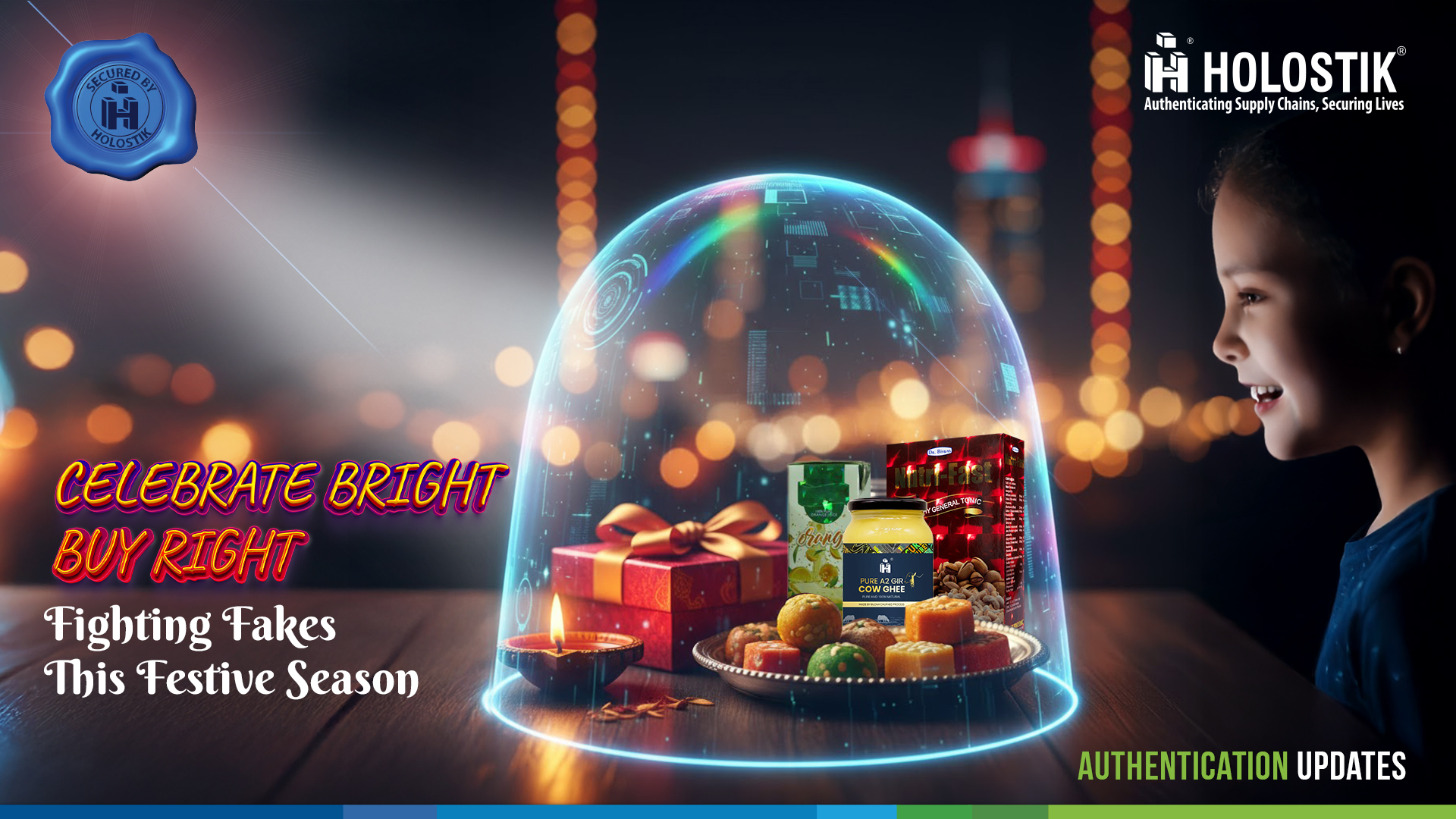How Fakes Threaten India’s Celebrations — And What We Can Do
As the festive season paints India in colours of joy, gifting, and celebration — a shadow economy awakens in parallel. While families stock up on sweets, clothes, electronics, and décor, counterfeiters gear up to cash in on festive chaos.
From adulterated ghee to fake cosmetics, imitation electronics to substandard auto parts — counterfeiting is not just stealing revenue, but also risking lives and eroding brand trust.
Why Are Festivals Prime Time for Fakes?
India’s retail industry witnesses its highest sales between October and December, when festival shopping peaks.
As per the Retailers Association of India, festive months drive a significant chunk of annual revenue for brands — but this surge also overwhelms supply chains and product verification systems.
Fraudsters exploit this pressure.
- Emotional purchases outweigh logic.
- Consumers prioritise discounts over authenticity.
- E-commerce & local markets overflow with unchecked SKUs.
The result? A marketplace flooded with fakes that are often indistinguishable from the real thing.
FMCG & Food: Sweetness That Can Turn Sour
According to a joint CRISIL–ASPA survey, nearly 28% of consumers reported encountering counterfeit products in the FMCG sector — one of the highest among all categories.
Sweets, ghee, packaged snacks, and edible oils are common targets during Diwali and Navratri.
Fake or adulterated food not only cheats consumers but poses serious health hazards.
According to a 2024 report by the Federation of Indian Chambers of Commerce & Industry (FICCI) and the Committee Against Smuggling and Counterfeiting Activities Destroying the Economy (CASCADE), illicit trade in key sectors—including textiles, fast-moving consumer goods (FMCG), and packaged foods—amounted to approximately ₹7.97 lakh crore annually.
Cosmetics, Apparel & Lifestyle: Looks That Deceive
Fake perfumes, designer apparel, and accessories dominate social media marketplaces during discount periods.
According to ASPA–CRISIL data, 31% of consumers reported encountering fake apparel and fashion items in India — the highest across all sectors.
Beyond economic loss, these fakes tarnish brand reputation and can cause allergic reactions or skin damage.
Electronics, Auto Parts & Home Renovation: Safety on the Line
Festivals are peak time for gadget purchases and home makeovers.
But along with excitement comes danger — counterfeit chargers, bulbs, wiring, auto parts, adhesives, and paints often infiltrate unregulated channels.
In early 2025, India’s DRI (Directorate of Revenue Intelligence) seized 160 tonnes of counterfeit goods, including electronics and cosmetics worth ₹6.5 crore.
Such incidents highlight that fake goods aren’t just bad for business — they’re a public safety hazard.
Pharmaceuticals & Health Products: Hidden Dangers
The festive focus on “wellness” and “immunity gifts” has created a parallel surge in fake health supplements and OTC medicines.
Globally, the WHO estimates that 1 in 10 medical products in low- and middle-income countries is substandard or falsified — and India is no exception.
Such fakes can be life-threatening, containing toxic fillers or missing active ingredients entirely.
How is Holostik Fighting Back?
For over three decades, Holostik has led India’s anti-counterfeiting revolution, empowering brands with solutions that make duplication virtually impossible.
1. Physical Security
Physical security solutions are the first line of defense, offering visible, secure, and tamper-evident authentication features.
- Apply Security Holograms as primary seals on packaging flaps or caps to ensure instant visual verification and provide evidence of tampering.
- Adopt Smart Labels (QR-based) on individual products. This provides a visible security feature and is the gateway to digital traceability (Phygital Security).
- Use Hot Stamping Foils for branding, which adds a premium look while embedding security features, securing valuable documents or certificates.
- Use Induction-Sealing Wads with embedded security features for food and health products to protect against adulteration and confirm seal integrity.
2. Digital Security
- Digital solutions provide the covert, verifiable layer that empowers brands with real-time visibility and allows direct consumer engagement.
- Implement a Track & Trace system linked to Smart Labels to enable real-time monitoring, identify grey market activity, and flag suspicious product movements.
- Use the platform for Inventory Management to create a verified ‘digital ledger’ of genuine products, instantly invalidating any fake product attempting to pass through the system.
- Launch a simple ‘Scan-to-Win’ or loyalty program tied to the unique QR code. This incentivizes consumers to scan and verify authenticity, generating valuable data and building trust.
3. Phygital Security (The Combination)
Combine a Security Hologram (physical) with an integrated QR-based Smart Label (digital) on your products. This dual protection provides both instant visual authentication and a robust digital verification pathway.
Let’s make this festive season not just bright — but genuine.
As you shop this Diwali or Christmas, remember: Buy from trusted sources. Verify your product. Report fakes.
Because authenticity doesn’t just protect your purchase, it protects your health, your trust, and the spirit of celebration itself.

